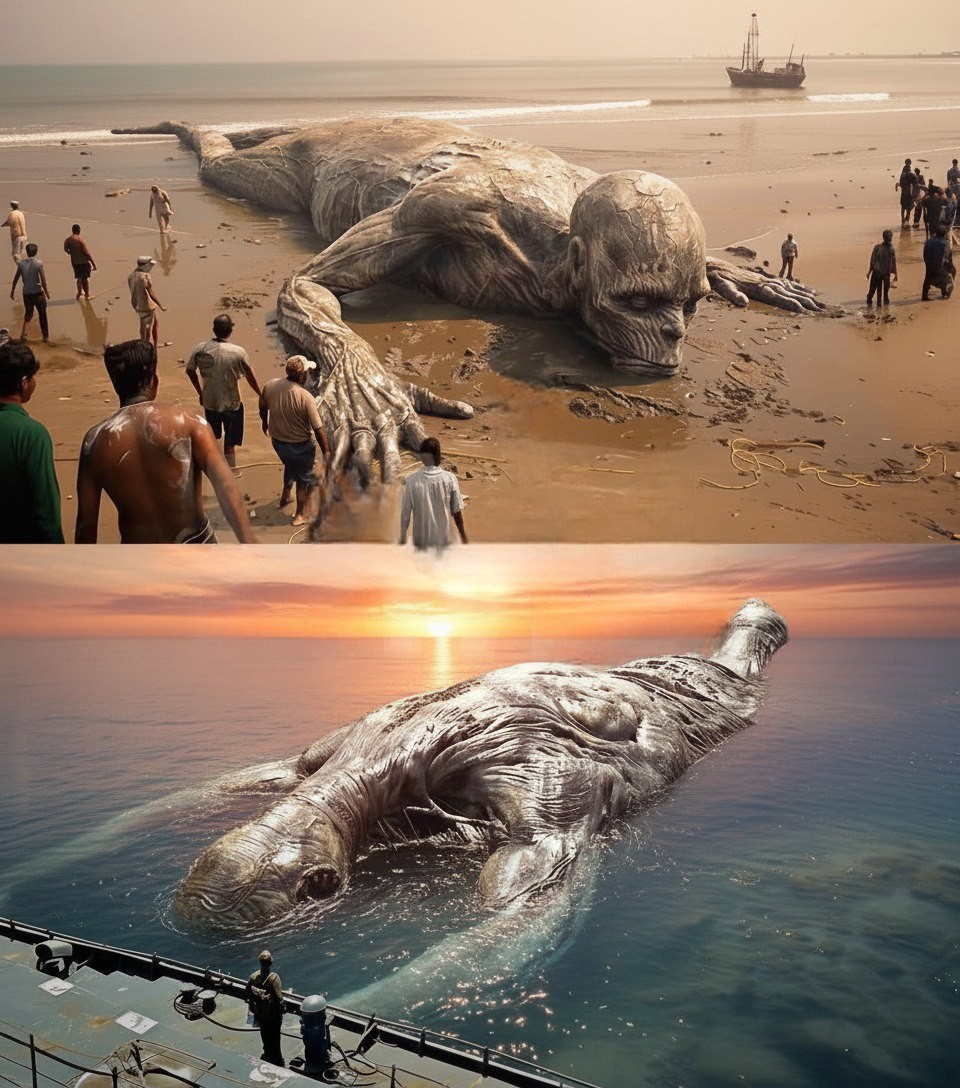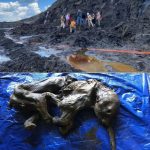The Colossus of Gujarat – The Giant Beneath the Arabian Sea

The Arabian Sea has long whispered secrets — tales of gods, lost cities, and civilizations swallowed by the waves. But now, along the western coast of India, those whispers may have taken form. Archaeologists working near Gujarat’s ancient port of Dwarka have reportedly uncovered something extraordinary: the Colossus of Gujarat, a fossilized humanoid of staggering size, buried beneath sand and coral for untold millennia.
A Giant Hidden Beneath the Waves

At first, the massive figure was dismissed as an unusually shaped limestone formation. But as marine scientists began high-resolution scans, they detected patterns that no natural erosion could produce — symmetrical bone-like structures, mineralized tissue, and faint remnants of organic matter. Closer examination revealed textures resembling preserved skin impressions, along with what appear to be vertebral columns and joint sockets.
If these findings hold true, the Colossus could represent the largest known humanoid fossil ever discovered — measuring over 11 meters (36 feet) from head to toe. The discovery site lies just kilometers from Dwarka, the legendary “City of Krishna,” said in Hindu texts to have sunk beneath the sea after a divine cataclysm.
For archaeologists and mythologists alike, the proximity is impossible to ignore.
Science, Myth, and the Ocean’s Secrets
The debate surrounding the find has exploded across scientific and cultural circles. Some researchers propose that the “fossil” may be an elaborate geological illusion — a formation shaped by millennia of pressure and mineralization. Others, however, argue that it could point to a lost species or an ancient genetic anomaly — perhaps even evidence of a civilization that predates recorded history.

Adding fuel to the mystery, sonar mapping around the discovery zone has revealed massive symmetrical structures — rectangular foundations and corridors stretching several kilometers along the seafloor. Could these be ruins of a prehistoric metropolis drowned by rising seas thousands of years ago?
If so, the Colossus might not have stood alone, but as part of a forgotten world erased by time.
The Colossus and the Lost Port of Dwarka
For centuries, Dwarka has been entwined with both legend and archaeology. Submerged ruins discovered in the early 2000s hinted at advanced ancient engineering — stone anchors, city walls, and harbor structures dating back thousands of years. The Colossus now reignites those discoveries, bridging myth and science in a way few finds ever have.
If confirmed as biological, it could reshape our understanding of human evolution in South Asia, or even suggest the existence of now-lost evolutionary branches adapted to aquatic life.
Echoes Beneath the Arabian Sea
Whether the Colossus of Gujarat is a natural marvel or the fossilized remains of a being beyond comprehension, its discovery forces humanity to confront an unsettling truth: our planet still guards stories too vast for reason alone.
Beneath the waves of the Arabian Sea, where the light fades and the ruins of ancient Dwarka sleep, something immense has awakened — a reminder that history is not always written in stone, but sometimes, in giants.










